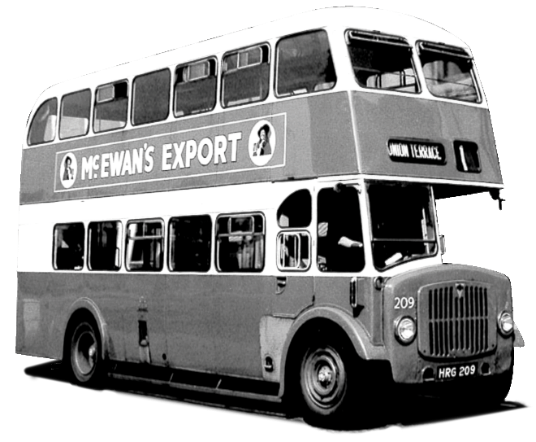The History
These buses were part of an order for five AEC chassis which had been added to an order for 75 such chassis placed by Glasgow Corporation. The orders were for delivery in 1955 for the Aberdeen batch and were to AEC’s chassis designation D2RV6G. In part translation this meant they had vacuum brakes, a preselect gearbox which happened to be to a pre-war design, and a Gardner engine. Aberdeen’s vehicles were part of the build-up of the Corporation’s motorbus fleet as the tramcar fleet was being run down.
The Aberdeen buses were bodied by Crossley of Stockport, Crossley bodywork having been popular with Aberdeen Corporation at this time. The H62R bodies were steel framed and were to the pre 1950 standard width of 7’6”. In later years the whole batch was gradually reseated to H64R.
Known to drivers as “Bombers”, the batch were notorious for their heavy steering compared to contemporary Daimlers. Note that buses of this era did not have power steering.
209 and all the others in the batch were withdrawn in 1971 and all were bought for further service by TD Alexander of Arbroath where they remained for about another three years. Numbers 207 and 209 eventually came into the ownership of a fruit farm in Perthshire where they were used for staff transport to/from worksites. Both were acquired for preservation in the late 1990s.

